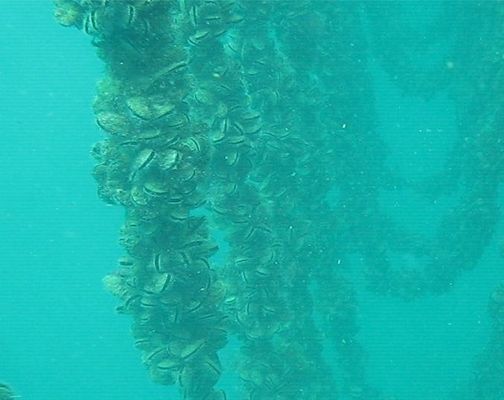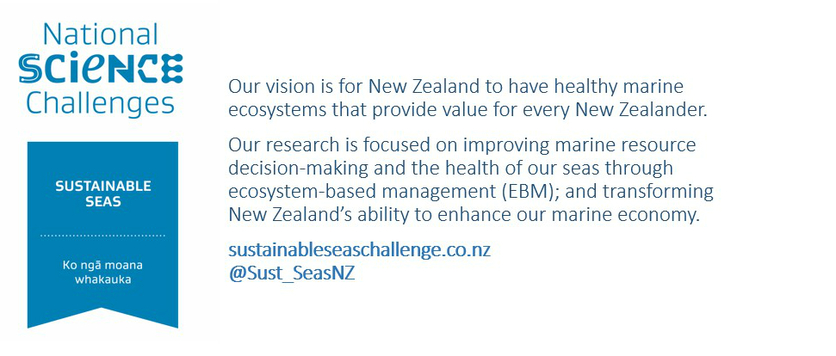Mātauranga Māori and science are helping to solve a few questions in Ōhiwa Harbour:
- What has caused the mussel beds to disappear?
- Can we restore the mussel beds?
- Is it possible to use natural fibres as mussel lines?
- Which natural fibres are the strongest/best fit for this restoration project?
The questions form the basis of Awhi Mai Awhi Atu: Enacting a kaitiakitanga-based approach to EBM – a Sustainable Seas project.
Tangaroa – Māori-led research
The Sustainable Seas National Science Challenge helps Aotearoa New Zealand enhance the value of our marine resources while ensuring they are safeguarded for future generations. One of its research themes is Tangaroa – Māori-led or partnered research that is informed by mātauranga and tikanga Māori. Projects in this theme enable direct benefits to the iwi and hapū involved.
The Awhi Mai Awhi Atu restoration project combines multiple aspects of mātauranga, which are helping lead researcher Associate Professor Kura Paul-Burke and her team re-establish kuku/kūtai/mussel beds in Ōhiwa Harbour.
Kuku/mussel beds and ecosystem services
Kuku are a taonga species for the local iwi. They provide kaimoana and are important for expressing manaakitanga. Kuku have several important roles within marine ecosystems. Mussels are filter feeders – as they draw in seawater to trap phytoplankton, they also remove sediments and other substances that make the water murky. Kuku beds provide habitats for other sea creatures and act as nurseries for juvenile fish.
Disappearing kuku beds
In 2007, Ōhiwa Harbour hosted a continuous 2 km reef of kuku beds with around 112 million juvenile kuku. By 2019, the number was down to just 80,000.
When the kuku beds first began to disappear, a rāhui was put down for 8 years as the losses were blamed on overfishing, but the kuku continued to disappear. Researchers considered other causes such as warming seas due to climate change. The likely culprit appears to be pātangaroa (sea stars). Sea stars eat mussels, and their numbers have increased dramatically. Kura sees this issue as a wicked problem. She says, “Pātangaroa have their own mana and their own mauri because they are from here. They are meant to be here.”
Using mātauranga and tikanga Māori to aid kuku recovery
Kura and the team used mātauranga ā iwi (local knowledge) to establish the size and shape of traditional mussel beds as well as the number of beds that had originally existed in the harbour. This information provided a valuable baseline for research.
Mussels are a major aquaculture species in Aotearoa. Mussel farmers have trialled numerous ways to seed mussel spat onto lines. They’ve found using fibrous plastic ropes is the best way to encourage spat to settle and grow into adults. However, the research team wanted to avoid microplastics entering the water and the kaimoana. To solve this problem, they are making mussel lines from natural materials. Kura enlisted weaving experts to create lines from harakeke, tī kōuka and kiekie (a woody climber) in hopes that kuku spat would attach to each. When the team went out to check the buoys and lines a few months later, they couldn’t find them. To their surprise, the mussel lines were so heavy with about 20,000 kuku per line that they were under the water!
Tī kōuka was the hardiest material. Lines created with tī kōuka lasted up to 5 months before breaking from the buoys and settling on the harbour floor. The weavers are trying a new combination of materials – a core of pirita (supplejack) for strength with either tī kōuka, pīngao or neinei woven around it. Renowned weaving expert Whaea Roka Ngarimu-Cameron shared her mātauranga and expertise, so she and her students were invited to help the research team place the new lines in the harbour.
It’s lovely to use a traditional resource in a new way. I am very interested to see how the kuku like pīngao and neinei – and how long they last!
Whaea Roka Ngarimu-Cameron, weaving expert
The Awhi Mai Awhi Atu restoration project has set up four kuku restoration stations. They’ve discovered three early-stage kuku beds near where they had deployed their initial sets of lines. When the lines break off and fall, the kuku stay as a group and grow as a whānau, while the lines safely biodegrade.
Mātauranga Māori and the nature of science
The scientists involved in this project recognise that mussels are an important intergenerational source of mātauranga Māori. Mātauranga Māori was used as the baseline to assist scientific subtidal surveys of the traditional mussel populations in Ōhiwa Harbour. Researchers are continuing to use this combination of mātauranga and science methodology to measure mussel bed decline and restoration.
Related content and activities
Harakeke was once crucial for day-to-day living in Aotearoa, and it still holds significant value in te ao Māori. Read about harakeke in the articles Wetland plants and Harakeke under the microscope.
These articles focus on plants highly valued as weaving resources:
- Te harakeke – he tipu raranga tangata
- Te kuta – te tipu kaitā o ngā nōhanga wai māori
- Te whakaora ake i te kuta
Ecosystem-based management (EBM) is a key component of the Sustainable Seas National Science Challenge. The EBM concept is explained in this article. A student activity uses EBM components to consider how a local area of significance could be managed, or it can form the basis for planning a local environmental project.
The Hub has numerous resources on estuaries curated in the PLD article Estuaries – a context for learning.
Project Mātauranga is a television series that investigates Māori world views and methodologies within the scientific community.
Sustainable Seas collection
See the range of content that we have developed using resources from the Sustainable Seas National Science Challenge in this handy collection. Learn how to create, use and share collections here.
Useful links
For more on this Sustainable Seas project, see this article on their website. Discover other Sustainable Seas projects under the Tangaroa research theme.
Although the Sustainable Seas Challenge finished in June 2024, the Challenge lives on via a new website – Tohorā. Find their te ao Māori resources here.
Associate Professor Kura Paul-Burke was a Kudos awards finalist in 2021. In this YouTube video, she talks about how they have blended western science with mātauranga Māori to help mussels.
Discover more information through these LEARNZ video’s: Mapping Mussels with Matauranga Māori and Meet Kura Paul-Burke, Marine Researcher.
A Sustainable Seas project is investigating whether the predatory sea stars may have bioactive properties.
The Sustainable Seas Challenge has created a set of cards that introduce key elements of kaitiakitanga. The 11 Hui-te-ana-nui: Kaitiakitanga cards are available to download here. If you would like hard copies of the cards please contact sustainableseasNC@niwa.co.nz. Sustainable Seas notes that the content included in the summaries remain under the guardianship of the original knowledge sources.
Acknowledgement
This article has been developed using resources from the Sustainable Seas National Science Challenge.




